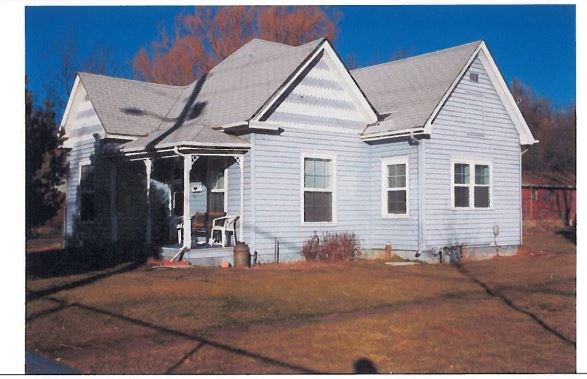This content was originally published by the Longmont Observer and is licensed under a Creative Commons license.
Historical landmarks are places that hold significance, whether that be locally or nationally.
This week Longmont City Council approved suggestions made by the Longmont Historic Preservation Commission to designate the Cordova/Anaya Home and the Turrel/Andrew Home as local historic landmarks.

The Cordova/Anaya Home is located at 710 Martin St. Historically the house is known as the Brown House is believed to have been constructed in 1910.
According to Longmont city directories the house was first occupied by Simon and Ethel (Roby) Brown in the late 1920s. In the 1930s the house was occupied by Robert T. and Minnie Arbella Copeland.
After the Copelands' residence in the home, it changed hands several times until 1964 until it was bought by Filano "Joe" and Ramana Anaya. The Anaya family has four generations living in Longmont today and still own the home.
In 1980, the house was the home of Jeff Cordova at the time he was killed by Longmont Police. According to the application for historical significance, "this was the tipping point of strained race relations between Longmont Law Enforcement and the Latino community."
After Cordova's death, Joe and Ramona Anaya founded El Comité with the mission to facilitate communication and understanding within the community to improve social justice, education, and economic status for the Latino and non-Latino members of the community.
The Cordova/Anaya home is on a parcel of land slated to be redeveloped. After the developer learned of the historical significance, they chose to redesign their site plan to incorporate the home into their project.
The home does not qualify it to be added to the National Register of Historic Place or the State Register of Historic Properties, but primarily based on its Late Victorian architectural character and local history makes it a place of local historical significance.
The Turrell/Andrew House, featured in the photo above, is located at 864 4th Ave. Architecturally, this 19th century home features elements of the Queen Anne style with an irregular plan and an asymmetrical massing. The exact date the home was built is unknown, but according to water rent collection records it dates back to 1892.
The original owner of the house was Judon Wade Turrell who moved to Colorado from Pennsylvania in 1843. After the Chicago-Colorado colonists founded Longmont, Turrell and his business partner, Reinzi (Rienzi?) Streeter relocated in Longmont from Cheyenne. The duo opened a business on the east side of Main St. This business burned down in 1879. The partners opened another store on the west side of Main St. shortly after. The Turrell Pharmacy has advertising records in the Longmont city directory in 1892.
Turrell was also civically engaged as a member of the Grand Army of the Republic in the 1880s as well as being the fire chief. In 1889 he became a delegate to Colorado's silver convention.
Turrell left his home to his daughter Elizabeth and her husband Dr. Charles F. Andrew.
Andrew came to Longmont to take over for the recently deceased doctor, Dr. Joseph J. Topliff. Later he established the Longmont Hospital and founded the Longmont Hospital Association.
Elizabeth and Charles divorced in 1909. The house became the home of John M. and Agnes Anderson by 1916. This couple are listed as being retired and seem to have only lived in the house for a few years.
In 1923, records show that the house became the Manse for the First Methodist Episcopal Church for four decades.
The home now belongs to Scott D. and Julia E. Pirnack, who have lived there since the early 1990s. Scott is an architect and Julia was the mayor of Longmont and an executive director for the Department of Higher Education.
According to city council communication, "the home is currently on the National Register as a contributing building in the West Side National Historic District and designation as a Local Landmark will not affect the property’s status on the National Register."
Both ordinances were approved by unanimous vote by Longmont City Council on Tuesday, December 17, making each home a local historical landmark.


